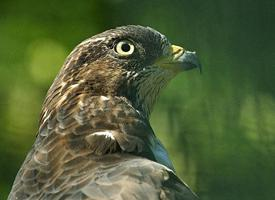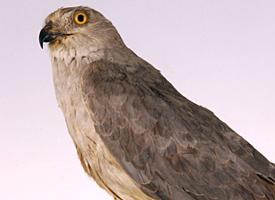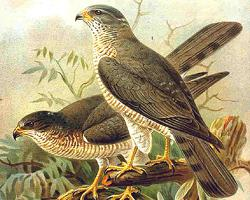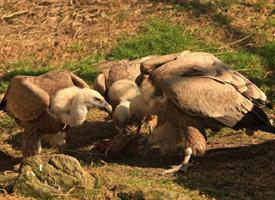
Váhy a míry
| Délka | od 52 do 60 cm |
|---|---|
| Hmotnost | od 580 do 950 g |
| Délka rozpětí křídel | od 135 do 150 cm |
Popis zvířete
The European Honey Buzzard (Pernis apivorus) is a captivating bird of prey that belongs to the Accipitridae family, which includes hawks, eagles, and kites. This species is particularly intriguing due to its specialized diet and unique behaviors. It exhibits a blend of grace and power, characteristics that define raptors, but with a lifestyle that sets it apart from its more aggressive cousins.Physically, the European Honey Buzzard is a medium to large-sized bird, with a length ranging from 52 to 60 cm (20 to 24 inches) and a wingspan that spans approximately 135 to 150 cm (53 to 59 inches). The bird possesses a relatively slender build when compared to other birds of prey, with long wings and a long tail that enhance its flying and gliding capabilities. The plumage of the Honey Buzzard is variable, but generally, adults have a mix of brown, grey, and white feathers, with males and females showing subtle differences in coloration. Juveniles tend to have a more speckled appearance and can take several years to acquire the full adult plumage.
One of the most fascinating aspects of the European Honey Buzzard is its diet. Unlike many raptors that feed on small mammals or other birds, this bird has a particular taste for the larvae of wasps and bees. It is equipped with long legs and strong, curved claws that allow it to dig into nests and extract its preferred meal. Additionally, its head is covered with scale-like feathers that protect it from stings. This specialized diet is the origin of its name and a key factor in its ecological niche.
The Honey Buzzard's breeding range covers much of Europe and extends into parts of Asia. It is a migratory species, with birds traveling to sub-Saharan Africa to spend the winter. Migration is a perilous journey, but it is essential for their survival, as it allows them to exploit seasonal resources and avoid the harsh European winter.
Breeding season for the Honey Buzzard begins in late spring when males perform elaborate aerial displays to attract a mate. Nests are typically built high in trees and are constructed from twigs and lined with green leaves. Females lay between 1 to 3 eggs, which are incubated for about 33 to 38 days. Both parents are involved in rearing the young, which fledge approximately 40 to 45 days after hatching.
In terms of behavior, the European Honey Buzzard is known for its secretive nature, often remaining hidden within forested habitats. Its flight is distinctive, with deep wingbeats followed by long glides, and it can often be seen soaring high in the sky during migration or territorial displays.
Despite its specialized diet and relatively low reproductive rate, the European Honey Buzzard is classified as Least Concern by the International Union for Conservation of Nature (IUCN), indicating that it is not currently at significant risk of extinction. However, like many species of birds of prey, it faces threats from habitat destruction, pesticide use, and illegal shooting.
In conclusion, the European Honey Buzzard is a remarkable bird of prey with unique adaptations that allow it to thrive in its niche. Its specialized diet, impressive migratory patterns, and complex behaviors make it a subject of interest for birdwatchers and conservationists alike. As efforts continue to protect its habitats and ensure its survival, the Honey Buzzard remains a symbol of the intricate balance within ecosystems and the importance of biodiversity.
Podobná zvířata
Nové fotografie zvířat
Top 10 zvířat
- Common cockchafer (Melolontha melolontha)
- Common house mosquito (Culex pipiens)
- Colossal squid (Mesonychoteuthis hamiltoni)
- Giant house spider (Eratigena atrica)
- Harpy eagle (Harpia harpyja)
- Fruit fly (Drosophila melanogaster)
- Australian box jelly (Chironex fleckeri)
- Common reed warbler (Acrocephalus scirpaceus)
- Moustached guenon (Cercopithecus cephus)
- Proboscis monkey (Nasalis larvatus)


